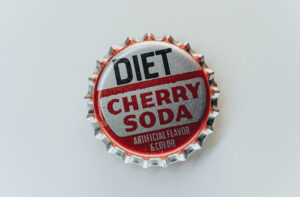INTENSELY SWEETENED BEVERAGES: ARE THEY A BETTER CHOICE?

Everyone knows that the best drink to quench thirst is water. However, not everyone has access to fresh clean water, all of the time. Also, people drink a wide range of beverages for a variety of reasons other than thirst/hydration, including enjoyment and social participation in a broad variety of events, including birthdays, funerals/wakes, religious festivals, weddings, etc…
Alcoholic beverages (“hard” drinks) are social lubricants and can be enjoyed by adults in moderation. However, they are the primary source of liquid energy (kilojoules) in the diets of Australian adults, providing on average more than twice as many kilojoules (Calories) daily, as soft drinks. And as mentioned in this month’s edition of Food for thought, excessive consumption may increase the risk of developing certain cancers (e.g., bowel, breast, and liver), developing foetal alcohol syndrome, having road accidents, and being the victim of violence. Soft drinks are also consumed for a variety of reasons including hydration (e.g., sports drinks), celebrations and other social events where alcoholic beverages may not be an ideal alternative or are socially prohibited (e.g., under-age, religious beliefs, etc…).
Soft drinks come in many different varieties, some sweetened with sugars and others with intense (“artificial”) sweeteners and consequently contain no added sugar. Are intensely sweetened beverages a better choice than sugar sweetened beverages or alcoholic beverages?
What are intense sweeteners?
The ingredient category “intense sweeteners” encapsulates a wide range of different molecules including acesulfame K, aspartame, advantame, cyclamates, monk fruit, saccharin, sucralose, stevia and stevia derivatives. Some are artificial and others are naturally occurring. They are all very sweet (hence their category name “intense sweeteners”), but other than that, they have very little in common, all having unique molecular structures and different pathways for digestion, absorption, metabolism and excretion.
Also, it’s important to point out that despite their intense sweetness in pure form, they are only permitted in minute quantities in foods and beverages consumed by humans. Indeed, in most nations, food regulations permit only the amount equivalent to the sweetness of sucrose, or other nutritive sweeteners, to be added to any food or beverage intended for human consumption (1). To achieve this, in most foods and beverages, they are diluted with either water, dietary fibres, polyols or maltodextrins, with the exact bulking agent varying significantly between different foods and beverages.
Finally, most provide very little or no energy (kilojoules or Calories) for metabolism, and are therefore not able to be used as a source of fuel for bacteria in the mouth or other parts of the digestive tract. Also, they are not a form of carbohydrate, so they do not raise blood glucose levels.
Health effects
Systematic reviews of randomised controlled trials in humans have determined that using intense sweeteners instead of added sugars leads to reductions in body weight, waist circumference, Body Mass Index (BMI) and energy (kilojoules or Calories) consumption, with no adverse effects on blood glucose, insulin or glycated haemoglobin (2,3,4).
In some observational studies, however, there are small associations with cardiometabolic risk, as discussed in this month’s edition of What’s new? As mentioned briefly, these observational studies investigating the association between beverages and chronic disease and its risk factors suffer from what is known as residual confounding – they are adjusted for known co-factors/confounders, but there are many that we either do not know about, or do not make adjustments for.
One of the most significant sources of residual confounding that effects the majority of the observational studies investigating the effects of beverage consumption on health is the fact that most adjust for Body Mass Index (BMI), but very few adjust for initial body weight. However, when it comes to human fluid requirements, body weight is more important than BMI because fluid requirements are directly related to how much people weigh (35 – 45 mL per kg body weight), not their BMI (5). In other words, people who weigh more have higher fluid requirements and therefore drink more of all kinds of beverages, independent of their BMI. For example, a person who is 152 cm tall, weighs 70 kg and has a BMI of 30 kg/m2 has a daily fluid requirement of 2450 – 3150 mL, whereas a person who is 182 cm tall, weighs 100 kg and also has a BMI of 30 kg/m2 has a daily fluid requirement of 3500 – 4500 mL. Therefore, despite having the same BMI (both technically obese), their fluid requirements are significantly different. So, adjusting for BMI in observational studies investigating the health effects of beverage consumption does not take into account the fact that people who weigh more have higher fluid requirements. Why does this matter? Because people who weigh more can also have an increased risk of chronic diseases like type 2 diabetes, and other cardiometabolic conditions, depending on whether the excess weight is fat (i.e., adipose tissue), and if so, where it is stored (intra-abdominal fat being the most metabolically active).
Finally, there is evidence that intense sweeteners have benefits for dental health, reducing the risk of tooth decay in children and adults (2).
Conclusion
While water is undisputedly the best drink to quench thirst, we don’t only drink because we are thirsty. For life’s important social events, or simply for pleasure, intensely sweetened drinks are an enjoyable alternative to sugar sweetened beverages that provide less kilojoules, won’t affect blood glucose levels or increase the risk of tooth decay. Unlike alcoholic drinks, they don’t increase the risk of developing cancer, foetal alcohol syndrome, accidents or violence. They are therefore a better choice than sugar sweetened beverages and arguably alcoholic beverages for many of those events in life that are not simply about quenching your thirst. Cheers!
Read more:
- Food Standards Australia and New Zealand. Food Standards Code 1.3.1—5 Limitation on use of intense sweeteners.
- Lee et al. Relation of Change or Substitution of Low- and No-Calorie Sweetened Beverages With Cardiometabolic Outcomes: A Systematic Review and Meta-analysis of Prospective Cohort Studies. Diabetes Care. 2022
- Rios-Leyvraz and Montez. Health effects of the use of non-sugar sweeteners A systematic review and meta-analysis. World Health Organization 2022.
- Zhang et al. The Effect of Non-Nutritive Sweetened Beverages on Postprandial Glycemic and Endocrine Responses: A Systematic Review and Network Meta-Analysis. Nutrients. 2023
- Krause’s food, nutrition, and diet therapy. 11th. ed: W.B. Saunders; 2004








